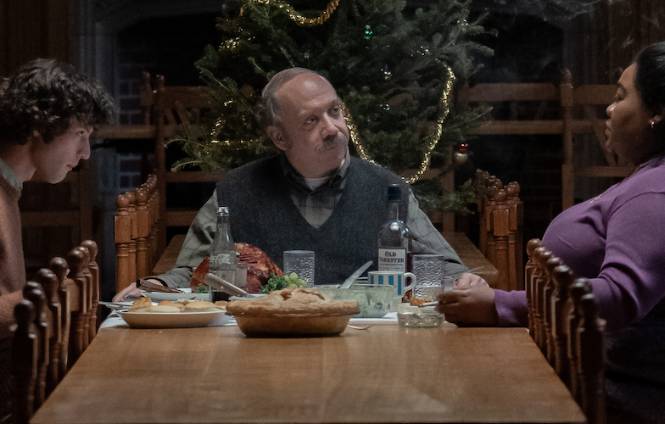
When The Holdovers (2023) came out in November I heard that the film was Alexander Payne’s love letter to the Hal Ashby classic The Last Detail (1973). So like any dutiful cinephile I revisited Ashby’s picture right before catching up with Payne’s latest. Suffice it to say that I was actually quite surprised by the numerous similarities between the two films. Paul Giamatti doesn’t talk about “yodeling in the can” and he’s not the “fuckin’ Shore Patrol”, but The Holdovers does follow many of the same narrative beats as Robert Towne’s highly influential script as well as recreating Ashby’s character driven aesthetic.
The main lesson that Payne has taken from The Last Detail is the benefits of letting a scene run long. Ashby’s film is full of scenes that last ten to sixty seconds longer than the script calls for to let the audience into moments that simply can’t be written with dialogue. This intimacy draws the viewer into the narrative, but more importantly it reveals aspects of characters removed from the forward trajectory of plot. In The Holdovers these sparse moments are where Paul Giamatti really shines as an actor. As the scenes play beyond their expositional value Giamatti discovers his weary academic beyond the parameters of the cliche role in which he has seemingly been cast.
There are less significant aesthetic similarities between the two films as well such as Payne’s use of The Last Detail‘s infamous dissolves. Payne also lifts whole sequences from The Last Detail like the bar scene in D.C. and the ice skating scene among others. Luckily Payne is an adept enough screenwriter to make these scenes his own. The general mood, look and pace of The Holdovers may be derived from The Last Detail, but there is no mistaking that the voice of the film is Alexander Payne’s.
The Holdovers, though set temporally to be contemporary to The Last Detail, is very much a film of the present. Payne addresses issues or race and class through the lens of the 21st century looking back towards the nineteen-seventies. Payne may dress The Holdovers up Tarantino style in seventies drag (using old titles and logos), but that’s just nostalgia for nostalgia’s sake.
Da’Vine Joy Randolph’s incredible performance would not have been a part of a film released in 1973, though it is very much a welcome necessity in 2023. It is her performance that is the most of that moment in time when the New Hollywood conquered tinseltown. Randolph, with just a glance, conveys more humanity than the whole of any other performance in the film. And there is not a single instance where the work Randolph is doing looks like acting. She perfectly embodies the New Hollywood heroine. Giamatti, a great actor, may fit the New Hollywood mold of a Gene Hackman but his style is never quite that grounded or visceral; something that seems to come easily to his scene partner Randolph.
Where The Holdovers falters is in its third act where Payne gives into sentiment. The pessimism of the first two acts is interrupted by the bitter sweet conclusion that comes across as a betrayal of all that proceeded it in the film. The Holdovers also fails to really wrap up Mary Lamb’s (Randolph) arc and just takes it for granted that a visit with family could do wonders for her all consuming grief. Payne takes what could have been a really good movie and turns it into just a good movie. It was nice to see My Best Friend’s Wedding (1997) stars Giamatti and Carrie Preston reunite in what is the best Paul Giamatti Christmas movie yet.
